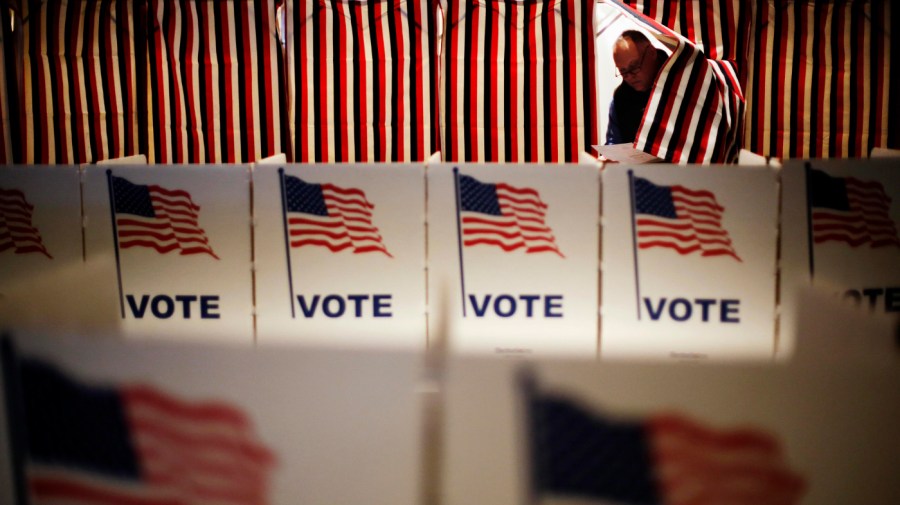
With two weeks until election day and polls effectively frozen at the national and state levels, it is increasingly appearing that “swing voters” will decide this election.
New polling by our firm, Schoen Cooperman Research, sought to shine fresh light on this key group of voters: those who are undecided or who support either candidate but may change their mind before election day.
To that end, our poll suggests that despite Harris having a narrow lead (34 percent to 29 percent) over Trump among these voters, it would be a mistake to consider them solid Harris voters.
This is a voting bloc oriented to vote against the incumbent administration, if the Trump campaign’s messaging can speak to their concerns that the country is on the wrong track and Trump’s policies will fix that.
Indeed, swing voters, who are largely political independents (40 percent) and young (42 percent are under 40 years old), are highly pessimistic about the state of the country, with roughly six in 10 saying the country is on the wrong track (62 percent), and that things have worsened in the U.S. over the last four years (59 percent).
In that same vein, less than one-half (48 percent) of swing voters who back Harris say their vote is for Harris, while more than one-third (36 percent) say their vote is really against Trump.
That is considerably weaker support than Harris voters generally, three-quarters (74 percent) of whom say their vote is for Harris.
The weaker support for Harris is likely due to the sizable advantage Trump has on the key issues — immigration, the economy and foreign policy — particularly when compared to the wider electorate.
Among voters who could change their mind, Trump leads Harris on trust to address illegal immigration (49 percent to 27 percent), manage the economy (48 percent to 31 percent), and deal with the wars in Ukraine (41 percent to 27 percent) and in the Middle East (36 percent to 27 percent).
To be sure, Trump’s lead with these voters is even greater than his lead among the entire electorate. If this sentiment is reflected in the swing states, it is not out of the question that Donald Trump will win between four and six of those crucial states.
On immigration, Trump’s 22-point lead is more than twice his 10-point lead with all voters. And on the economy, his 17-point lead is four times greater than the 4-point lead he has on this issue with the wider electorate.
With inflation (38 percent), the economy (28 percent), and immigration (25 percent) being the most important issues cited by these voters, Trump’s lead figures give him a considerable edge when Americans cast their vote.
Harris’ struggles with this group are partly — or fully — due to her messaging strategy. Voters simply do not know where she stands on the issues they care about.
While nearly four in 10 (39 percent) of national voters say Harris has been clearer than Trump on her plans to address immigration and a similar 46 percent say that about her economic policies, these “swing voters” feel quite differently.
Just one-quarter (25 percent) of this voting bloc says Harris has been clearer than Trump about how she’d approach immigration, and 37 percent say the same about Harris’s economic plans.
Overall, a plurality (41 percent) of these swing voters say that Harris has not been clear about where she stands on key issues, leaving them unsure what Harris would do if elected. That is an alarming finding this close to an election.
A similar plurality (39 percent) of swing voters say they are more concerned that Harris is too far to the political left, versus 35 percent saying they’re more concerned that Trump is too far to the right.
Plainly, both Trump and Harris must do a better job messaging if they hope to win this critical voting bloc, although Trump’s job is considerably easier given their aversion to the current administration.
For Trump, he must get back to an economic-centered campaign focusing on tax cuts, deregulation, and smaller government.
For Harris to win over the voters who could change their minds before election day, it starts with taking advantage of her lead on ‘swing voters’ perceptions of her as the change candidate — 47 percent say she is vs. 27 percent for Trump — and to clearly communicate her immigration and economic agenda.
On the latter, Harris needs to articulate what her “opportunity economy” means. She’s stated the housing subsidies, lower prescription and healthcare costs, and investing in the American worker, but as our data shows, a significant number of Americans have little idea what she actually will do, or how she will do it.
Similarly, Harris needs to tell these voters how her presidency would be different than President Biden’s given that just 38 percent of swing voters approve of the job Biden has done.
Harris has taken strides to portray herself as a political moderate, including promoting her gun ownership, but more must be done if she wants to sway these voters who are either undecided or are open to changing their minds.
One of us has previously written about the need for Harris to formulate a comprehensive communications strategy that addresses voters’ lack of knowledge about her positions. But with two weeks to go, it is now absolutely critical.
Douglas E. Schoen and Carly Cooperman are pollsters and partners with the public opinion company Schoen Cooperman Research based in New York. They are co-authors of the book, “America: Unite or Die.”

